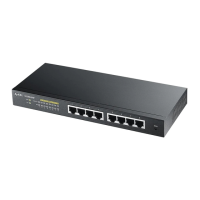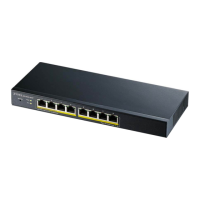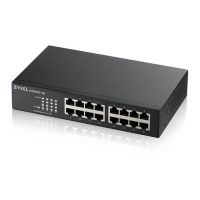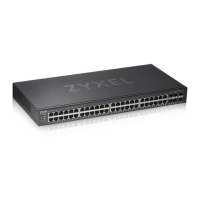Chapter 31 DHCP
GS1350 Series User’s Guide
242
31.2 DHCP Configuration
Click IP Application > DHCP in the navigation panel to display the screen as shown. Click the link next to
DHCPv4 to open screens where you can enable and configure DHCPv4 relay settings and create option
82 profiles. Click the link next to DHCPv6 to open a screen where you can configure DHCPv6 relay
settings.
Figure 176 IP Application > DHCP
31.3 DHCPv4 Status
Click IP Application > DHCP > DHCPv4 in the navigation panel. The DHCP Status screen displays.
Figure 177 IP Application > DHCP > DHCPv4 Status
The following table describes the labels in this screen.
31.4 DHCPv4 Relay
Configure DHCP relay on the Switch if the DHCP clients and the DHCP server are not in the same
broadcast domain. During the initial IP address leasing, the Switch helps to relay network information
(such as the IP address and subnet mask) between a DHCP client and a DHCP server. Once the DHCP
client obtains an IP address and can connect to the network, network information renewal is done
between the DHCP client and the DHCP server without the help of the Switch.
The Switch can be configured as a global DHCP relay. This means that the Switch forwards all DHCP
requests from all domains to the same DHCP server. You can also configure the Switch to relay DHCP
information based on the VLAN membership of the DHCP clients.
Table 112 IP Application > DHCP > DHCPv4 Status
LABEL DESCRIPTION
Relay Status This section displays configuration settings related to the Switch’s DHCP relay mode.
Relay Mode This field displays:
None – if the Switch is not configured as a DHCP relay agent.
Global – if the Switch is configured as a DHCP relay agent only.
VLAN – followed by a VLAN ID or multiple VLAN IDs if it is configured as a relay agent for specific
VLANs.

